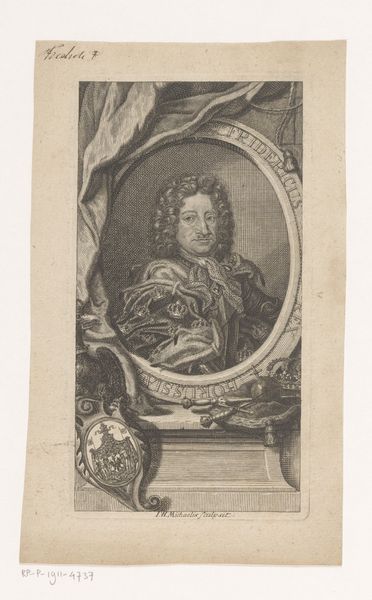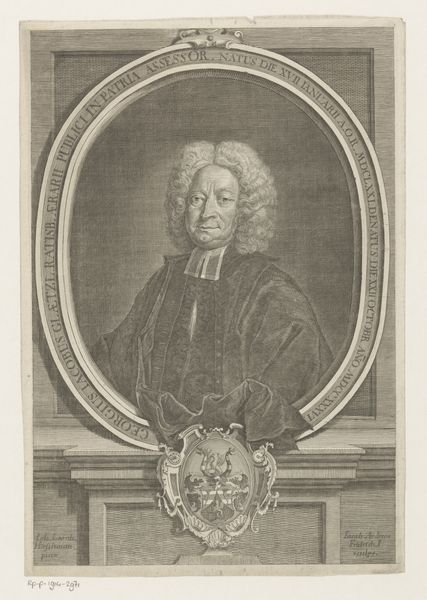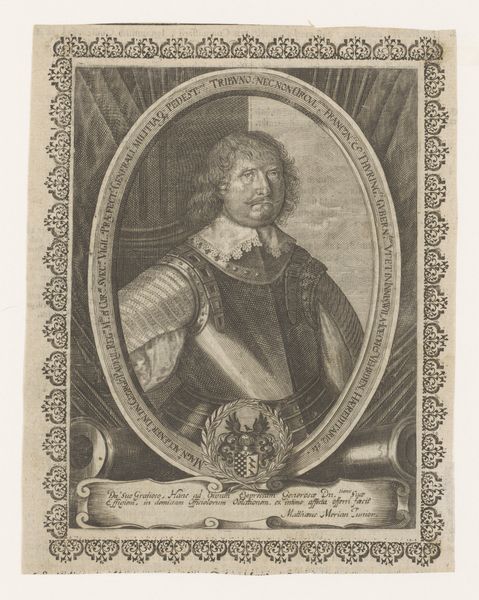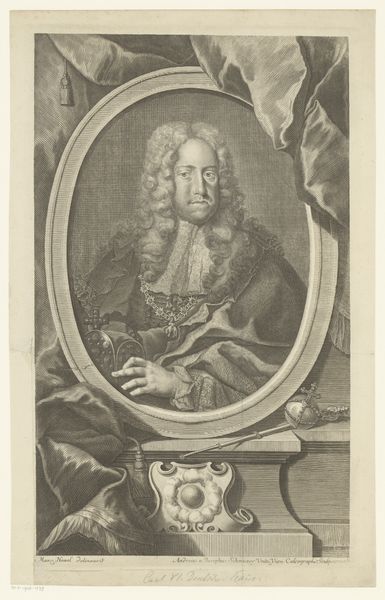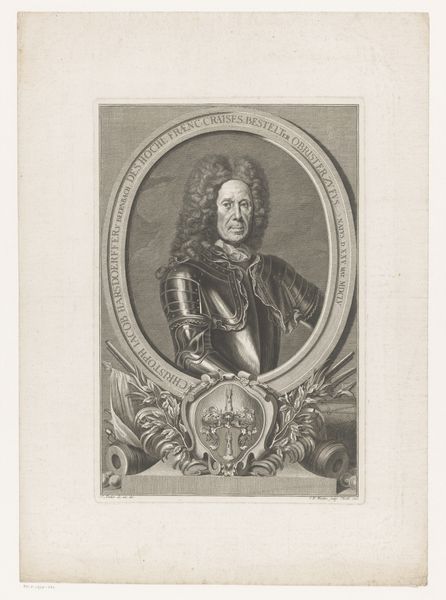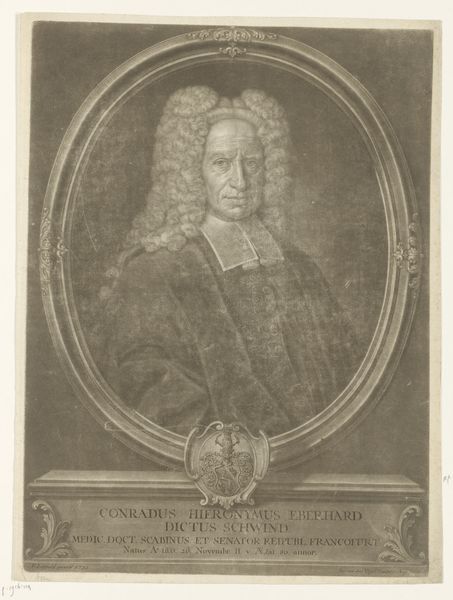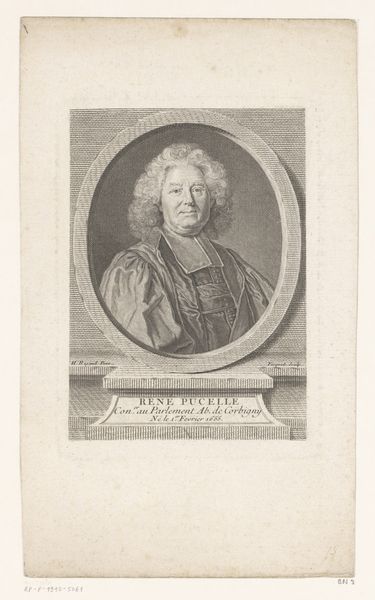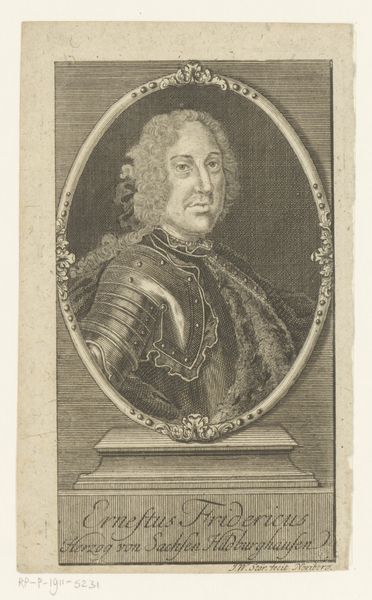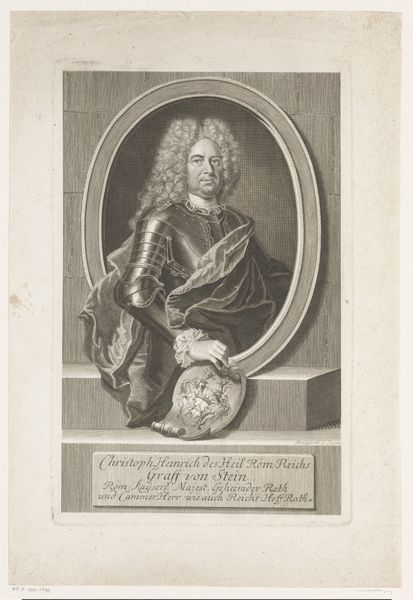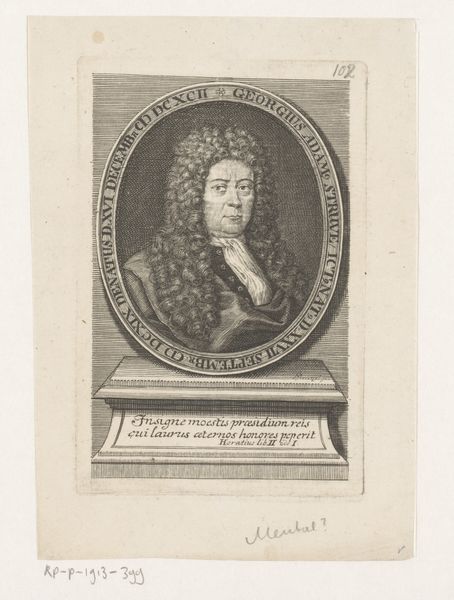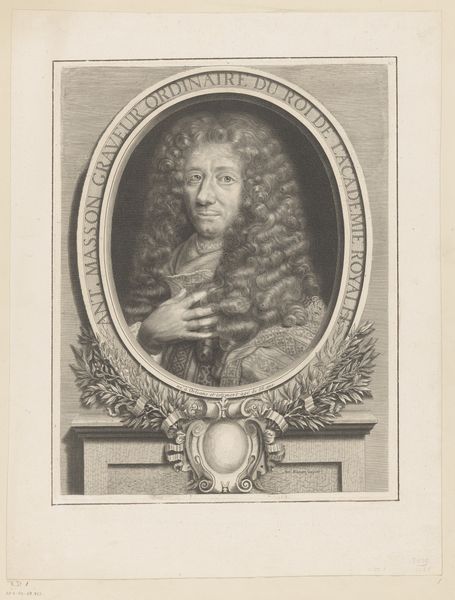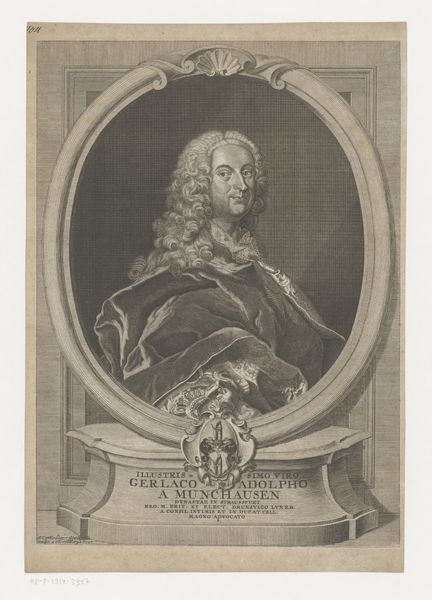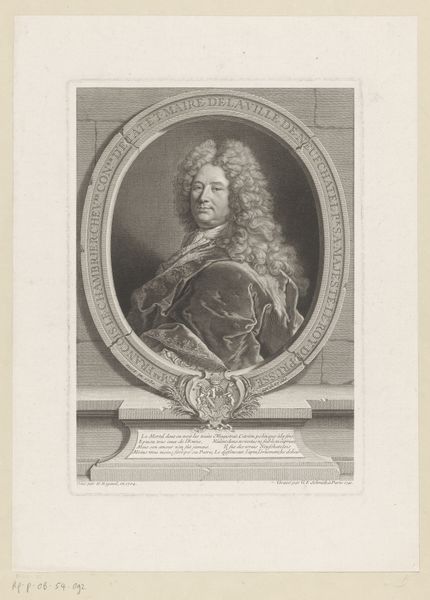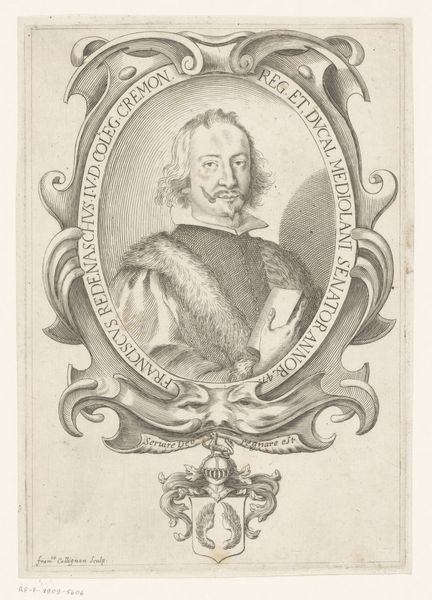
print, engraving
#
portrait
#
aged paper
#
baroque
# print
#
engraving
Dimensions: height 182 mm, width 137 mm
Copyright: Rijks Museum: Open Domain
Curator: This is a print titled "Portret van Pierre Daniel Huet," created in 1722 by Gustav Andreas Wolfgang, currently held in the Rijksmuseum. It's a baroque engraving. What are your initial impressions? Editor: Stark. The crispness of the engraved lines really defines the image, giving it an almost severe, yet refined presence. It’s a masterful exercise in creating tone and texture from, essentially, just marks. Curator: Indeed. Wolfgang's use of line is exceptionally controlled. The ovoid frame, for example, serves not only to contain but also to concentrate the gaze on the subject's face. How does the inscription play into the overall structure? Editor: It situates the subject but also forms a purely aesthetic geometry in conversation with the ovoid frame, and rectangular base. The inscription tells us "Petrus Daniel Huetius Episcopus Abrincensis", but its presence contributes texture, much like the curled hair and the ornate coat of arms, disrupting the starkness I initially perceived. Speaking of texture, the subtle paper grain almost adds another layer to the print. Curator: Precisely. Note how the aging of the paper creates subtle shifts in value. This subtle quality draws us into its historicity, underscoring the importance of the print medium in disseminating images and ideas across time. The deliberate texture draws the viewer in. Do you agree? Editor: Without a doubt. Engraving facilitated distribution, and it’s interesting to think about how this very portrait—dependent on artisanal skills and distribution networks—helped solidify Huet's image as an intellectual of significant standing. Each impression demanded skillful labour. Curator: Excellent point. And even the coat of arms, seemingly decorative, performs a structural function, anchoring the portrait to its supporting plinth and completing the visual composition. Editor: So, it is far more than a formal likeness, then, but a constructed emblem of stature, facilitated through printmaking processes. Each mark of labor and status underscores a narrative that both reflects and helps reinforce Huet’s cultural positioning. Curator: Exactly. A portrait constructed as much through the precise wielding of burin as by Huet’s own intellectual contributions. Thank you. Editor: Thank you. An efficient print can offer insights into power dynamics beyond aesthetics.
Comments
No comments
Be the first to comment and join the conversation on the ultimate creative platform.
